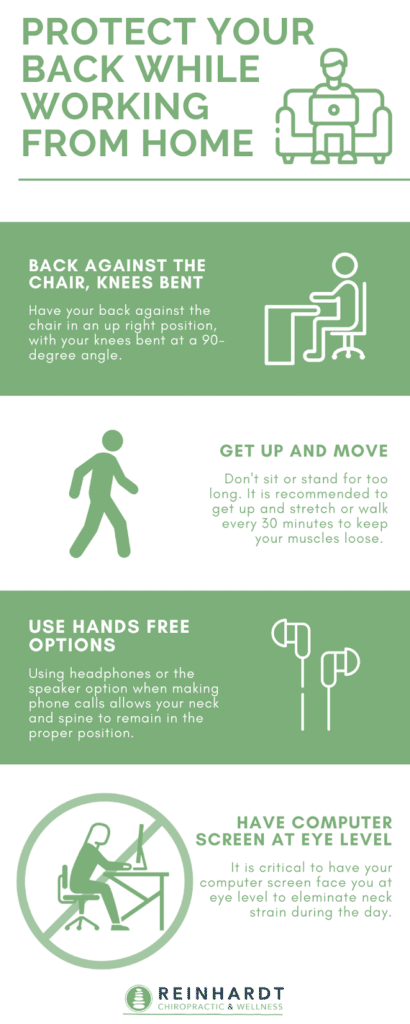As many of us have settled into a groove while working from home during the ongoing COVID-19 pandemic, some of us may have noticed a growing sense of back pain. Today, back pain is one of the leading causes of missed work, with a reported 264 million missed days within one year, according to the American Chiropractic Association. That equates to two days for each full-time worker in the United States.
While working from home has its perks: casual dress wear, no traffic commute, and more sleep, it also is accompanied by various health risks. Things like limited social contact, greater eating potential, and poor back posture all pose risk to your short and long-term health. Therefore, as Americans and people around the world adjust to working from home, we must also ensure we’re protecting our health inside the home.
A major catalyst for back pain developing in remote work involves individuals not having dedicated workspaces. Working from a well-positioned desk, and structurally supportive chair is essential to preserving the general health of your back vertebrae and muscles.

How You Can Protect Yourself From Back Pain
- View your computer screen with a straight neck
- Even if you are sitting at a desk, having your computer screen below eye level will cause your neck to be hunched over for long periods of time. This puts stress on your spine and neck muscles. Instead, place a book, box, or some type of stand under your monitor or laptop to sit at your eye level.
- Feet flat on the floor, with knees bent at a 90-degree angle
- With your feet flat on the floor (or footstool) and knees bent, this helps best evenly distribute your weight and promote proper blood flow.
- Avoid working from bed
- Working from bed is appealing, but it leaves our spine in an unhealthy position. With feet outstretched and back against the wall (or headboard), a lot of strain is placed on your back muscles.
- Don’t sit or stand for too long
- Sitting or standing for continuous hours is not good for your back or muscles. It is recommended that every 30 minutes you move from your desk and stretch or walk around.
- Back against the chair
- When sitting in the chair, don’t slump over. Fix this by bringing the abs in toward the spine, lifting the chest and rolling back the shoulders. It may feel uncomfortable at first but will help prevent back pain in the future.
- Change positions frequently if working from the couch
- If you must work from the couch, change your sitting position frequently to avoid back muscles getting too tense. But always keep your back perpendicular to the sofa.
- Use speaker function or headphones when using the phone
- Bending your neck to hold the phone against your shoulder, or holding the phone up against your ear for long periods of time is not good for your back health. Using these hands-free options allows your spine to remain in its natural state.
- Develop a routine and stick to it
- Working from home offers a lot of flexibility in your schedule, however, it is best to keep a regular routine. This helps your productivity, daily habits, and your mental health.
Recent Post
Managing Stress and Tension: How Chiropractic Care Can Help
July 1, 2024
In our fast-paced world, stress and tension have become ever-present. Whether it’s the demands of work, family responsibilities, or the challenges of everyday life, many of us are constantly battling stress. At Reinhardt Chiropractic, we believe in a holistic approach to health that addresses not only physical pain but also the underlying stress that can
Read More…
Understanding the Benefits of Chiropractic Care for Athletes: Enhancing Performance and Preventing Injuries
June 1, 2024
In the world of sports, athletes are always seeking ways to improve their performance and prevent injuries. One often overlooked yet highly effective method is chiropractic care. At Reinhardt Chiropractic, we understand the unique demands placed on athletes and how chiropractic care can be a game-changer in their training and recovery regimes. Enhancing Performance Improved
Read More…

